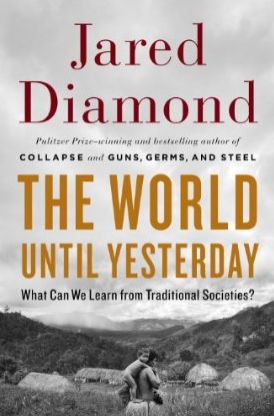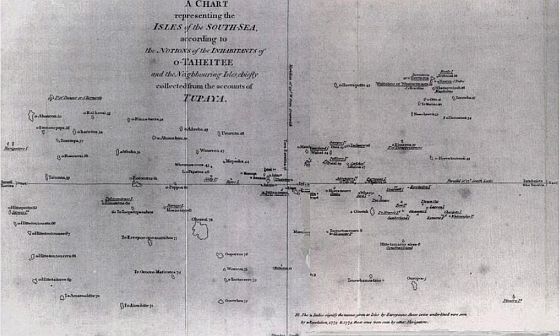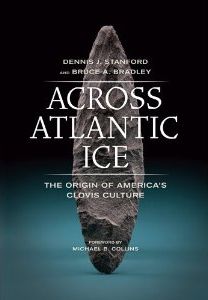In a review of The World Until Yesterday: What Can We Learn from Traditional Societies?, Wade Davis says that Jared Diamond’s approach to anthropology is rooted in many of the prejudices of the nineteenth century which saw societies from traditional to modern as stages in a linear progression of advancement.
The other peoples of the world are not failed attempts at modernity, let alone failed attempts to be us. They are unique expressions of the human imagination and heart, unique answers to a fundamental question: what does it mean to be human and alive? When asked this question, the cultures of the world respond in 7000 different voices, and these answers collectively comprise our human repertoire for dealing with all the challenges that will confront us as a species as we continue this never-ending journey.It is against this backdrop that one must consider the popular but controversial writings of Jared Diamond, a wide-ranging scholar variously described as biogeographer, evolutionary biologist, psychologist, ornithologist and physiologist. In Guns, Germs and Steel, Diamond set out to solve what was for him a conundrum. Why was it that some cultures such as our own rose to technological, economic and political predominance, while others such as the Aborigines of Australia did not? Rejecting notions of race, intelligence, innate biological differences of any kind, he finds his explanation in the environment and geography. Advanced civilisations arose where the environment allowed for plant domestication, leading to the generation of surplus and population growth, which in turn led to political centralisation and social stratification. No surprises there.
In Collapse, Diamond returned to the theme of environmental determinism as he pondered why and how great civilisations come to an end. Evoking the ecological fable of Easter Island, he suggests that cultures fall as people fail to meet the challenges imposed by nature, as they misuse natural resources, and ultimately drift blindly beyond a point of no return.
Again nothing to suggest controversy, save for the shallowness of the arguments, and it is this characteristic of Diamond’s writings that drives anthropologists to distraction. The very premise of Guns, Germs and Steel is that a hierarchy of progress exists in the realm of culture, with measures of success that are exclusively material and technological; the fascinating intellectual challenge is to determine just why the west ended up on top. In the posing of this question, Diamond evokes 19th-century thinking that modern anthropology fundamentally rejects. The triumph of secular materialism may be the conceit of modernity, but it does very little to unveil the essence of culture or to account for its diversity and complexity.
Consider Diamond’s discussion of the Australian Aborigines in Guns, Germs and Steel. In accounting for their simple material culture, their failure to develop writing or agriculture, he laudably rejects notions of race, noting that there is no correlation between intelligence and technological prowess. Yet in seeking ecological and climatic explanations for the development of their way of life, he is as certain of their essential primitiveness as were the early European settlers who remained unconvinced that Aborigines were human beings. The thought that the hundreds of distinct tribes of Australia might simply represent different ways of being, embodying the consequences of unique sets of intellectual and spiritual choices, does not seem to have occurred to him.
In truth, as the anthropologist WEH Stanner long appreciated, the visionary realm of the Aborigines represents one of the great experiments in human thought. In place of technological wizardry, they invented a matrix of connectivity, an intricate web of social relations based on more than 100 named kin relationships. If they failed to embrace European notions of progress, it was not because they were savages, as the settlers assumed, but rather because in their intellectual universe, distilled in a devotional philosophy known as the Dreaming, there was no notion of linear progression whatsoever, no idealisation of the possibility or promise of change. There was no concept of past, present, or future. In not one of the hundreds of Aboriginal dialects and languages was there a word for time. The entire purpose of humanity was not to improve anything; it was to engage in the ritual and ceremonial activities deemed to be essential for the maintenance of the world precisely as it was at the moment of creation. Imagine if all of Western intellectual and scientific passion had focused from the beginning of time on keeping the Garden of Eden precisely as it was when Adam and Eve had their fateful conversation. [Continue reading…]







 I’ll come back to this paradox shortly, but I don’t find the idea very persuasive that crows need to be able to spot dangerous people.
I’ll come back to this paradox shortly, but I don’t find the idea very persuasive that crows need to be able to spot dangerous people.